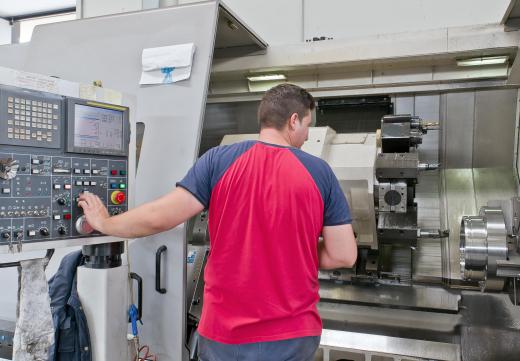A guillotine shear is a machine that can shear or cut various materials with a guillotine design. The word “guillotine” is associated with a blade that drops along a vertical track. This type of machine was primarily used in familiar history as a method of execution, particularly in the French Revolution, but the modern guillotine shear cutter is a tool used to form and shape products for a market.
A guillotine shearing machine applies the potential of a dropping blade to an installation for cutting specific kinds of industrial products quickly and precisely. Modern guillotine type machines range in size and cost. Some are simple, table-mounted machines. Other are bulky, floor-standing installations built to cut a larger piece of metal or other material. Guillotine shearing machines can be mechanical or hydraulic in design.

A guillotine type shear can have a variety of applications in many manufacturing industries. These tools can be used for either wholesale or retail product design. For instance, a sheet metal wholesaler can use a large guillotine machine model to cut simple pieces of raw material for tier pallet shipping. A retail shop can use a different model of guillotine shear to shape metal pieces for specific designs for any kind of retail item.

In some metal-working or production shops, guillotine style shears could be part of a tool set that includes new plasma cutting for efficient manufacturing of metal products. Items like plasma cutting and CNC shearing machines represent an increasingly automated system where CAD or Computer Aided Design manages a manufacturing process. A CAD process takes more of the design work off of the human staff and replaces it with neat, capable automated work.

Although more of today’s manufacturing process may be automated, guillotine shears and other machines still rely on human staff to keep them operational. Manual machines may still require specific human labor for cutting or shearing. Many of these machine types are inspected by the federal Occupational Health and Safety Administration or OSHA, or other work safety groups. Oversight by OSHA or a similar agency ensures that potentially dangerous machines like guillotine style cutters are safe for humans to operate in an industrial setting.
Specialized vendors offer a range of guillotine shear machines and other cutters for the specific needs of a client business. Many guillotine shear models are now sold internationally, for specific uses in shops that benefit from large volume shearing to develop and distribute their products. Companies in need of this kind of hardware can often get the information they need from the online catalogs of specific vendors.
